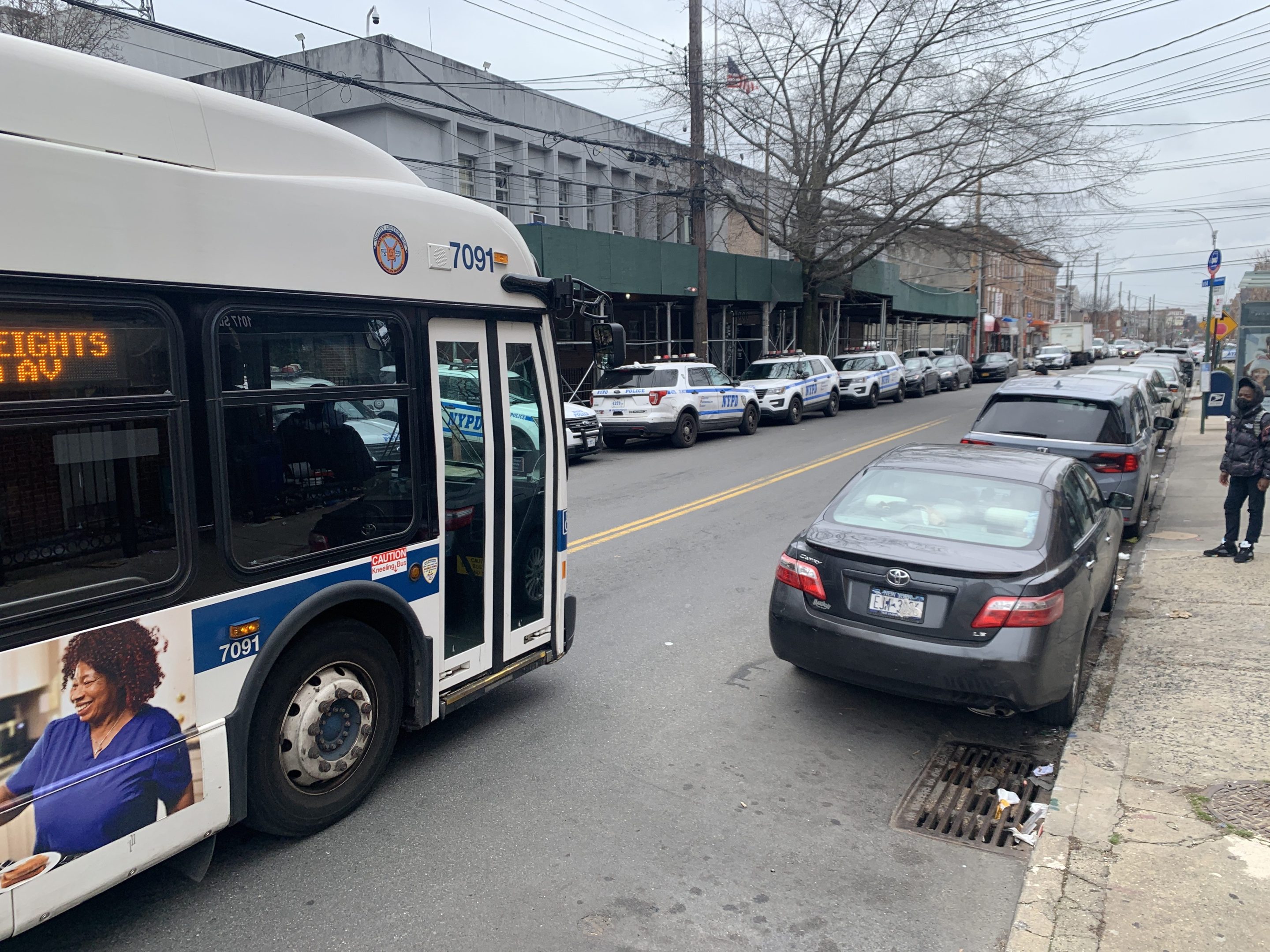If you love blocking buses and bus stops, it's time to get a new hobby.
The MTA will dramatically expand the reach of the its bus lane enforcement cameras next year — and enable them to ding drivers for double parking and blocked bus stops as well, officials said Wednesday.
Beginning in May, the MTA's automated bus lane enforcement program will become automated camera enforcement on 623 buses and 21 routes — widening the cameras' purview after receiving the power to do so in this year's state budget. Officials plan to add cameras to over 400 more buses and 14 more routes as the year progresses.
"This is quite a game changer for us," Sunil Nair, the MTA's chief officer for zero emissions fleet transformation, said during a public presentation to MTA board members on Wednesday.
"Any time you have a bus stop ... blocked by other vehicles, our operators have to pull in in the middle of the road and get passengers off the bus, which is not just an issue with respect to accessibility, but also with respect to safety — because your passengers are getting getting off the bus in the middle of the road."
A double-parked vehicle, meanwhile, "has the potential ... to slow down traffic behind it on our roads," Nair said.
Bus speeds jump 5 percent on average on routes with ABLE cameras activated, according to MTA figures.
The State Legislature authorized the newly expanded camera program through 2027. By the time the issue comes up for renewal, the MTA will have cameras on 2,023 buses on 65 routes — speeding up service for 950,000 riders across the city, Nair said.
Only about eight percent of drivers get more than one camera ticket — a sign they learned to follow the rules — and collisions even go down by 20 percent:

On top of the MTA's camera expansion, the NYPD on Wednesday announced "Bus Lane Enforcement Task Force" to focus on ticketing drivers parked in bus lanes, bus stops and busways.
Beginning on Dec. 4, 85 cops and 15 tow trucks will fan out to enforce bus priority on 18 bus corridors in all five boroughs, Mohammad Rahman, commanding officer of the NYPD's Traffic Enforcement Division in Queens South, told board reps.
The NYPD and MTA's enforcement expansion comes after opponents of the scuttled Fordham Road bus lane proposal said that they wanted the DOT to repaint the bus lane and rely on NYPD and camera enforcement instead of expanding prohibitions on car access.
But bus lanes paired with automated and human enforcement have proven to be the best solution to speed up buses in the city, according to New York City Transit President Rich Davey.
"When you have a bus lane speeds can improve 20, 25 percent," Davey told board members on Wednesday.
"When you have enforcement, you get another 5 percent on that. So you're talking about 30 percent improvement if we have all these tools together, and that can add up."






